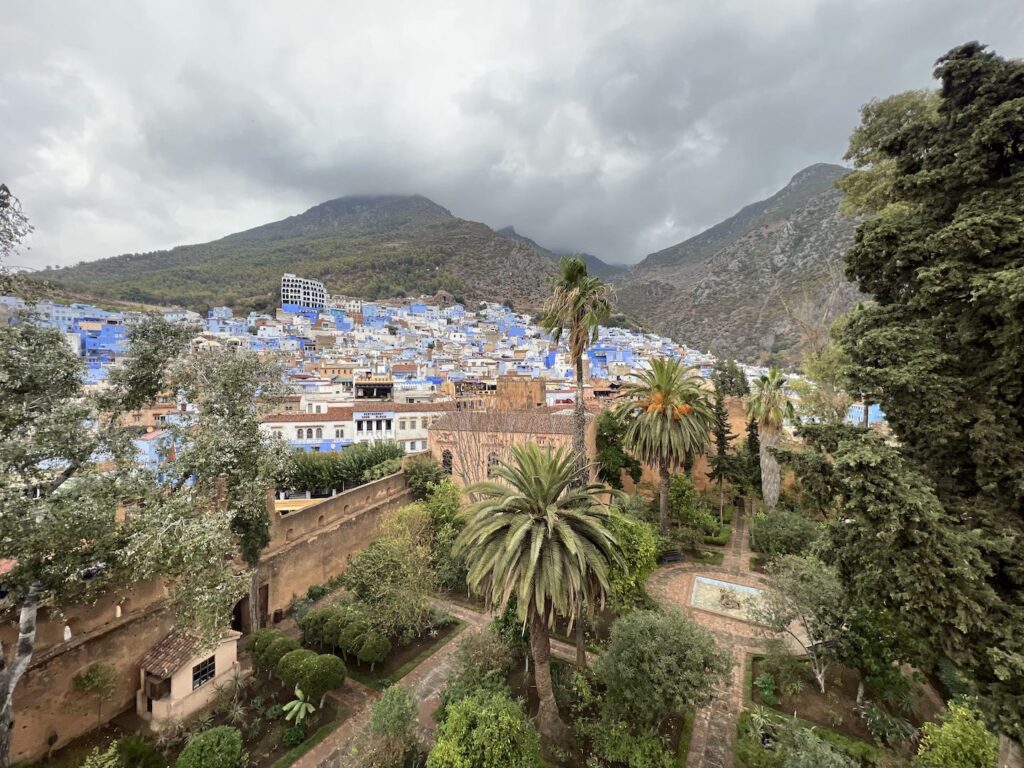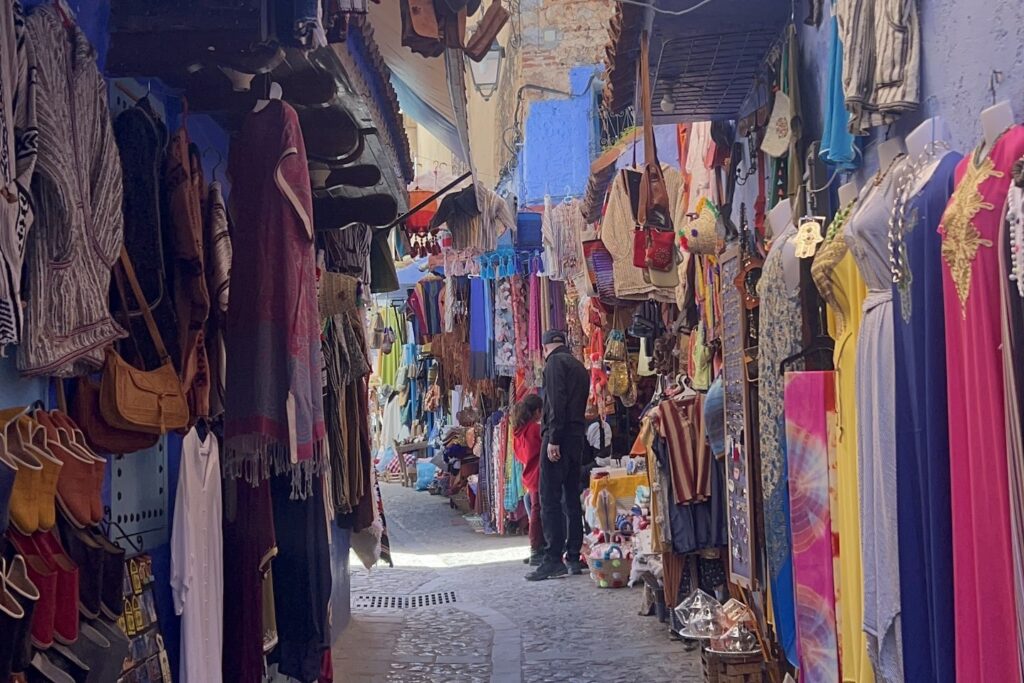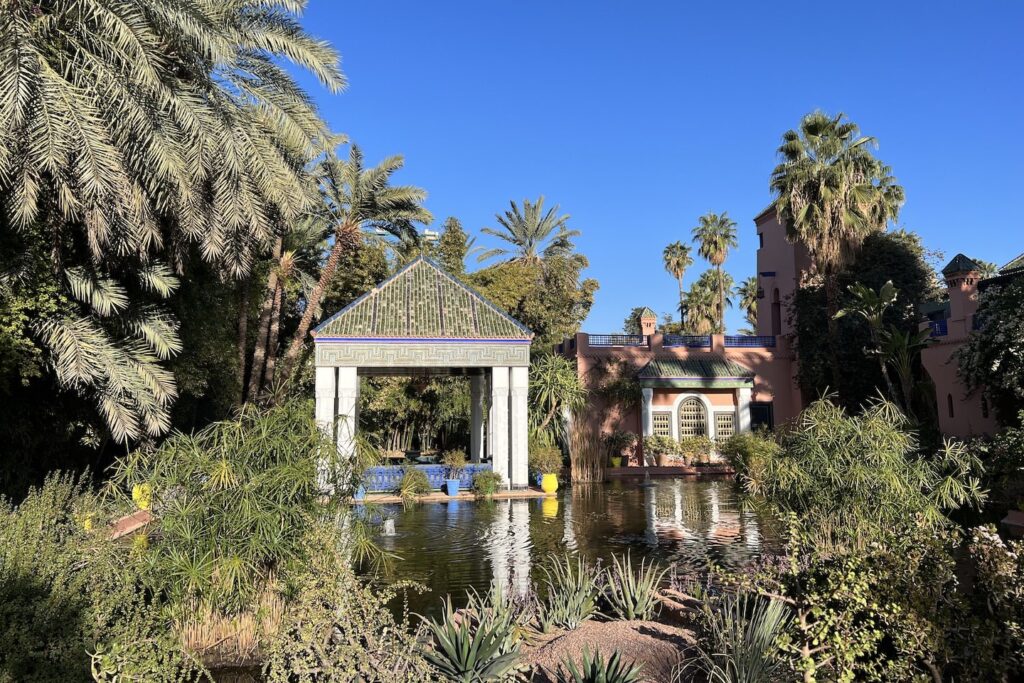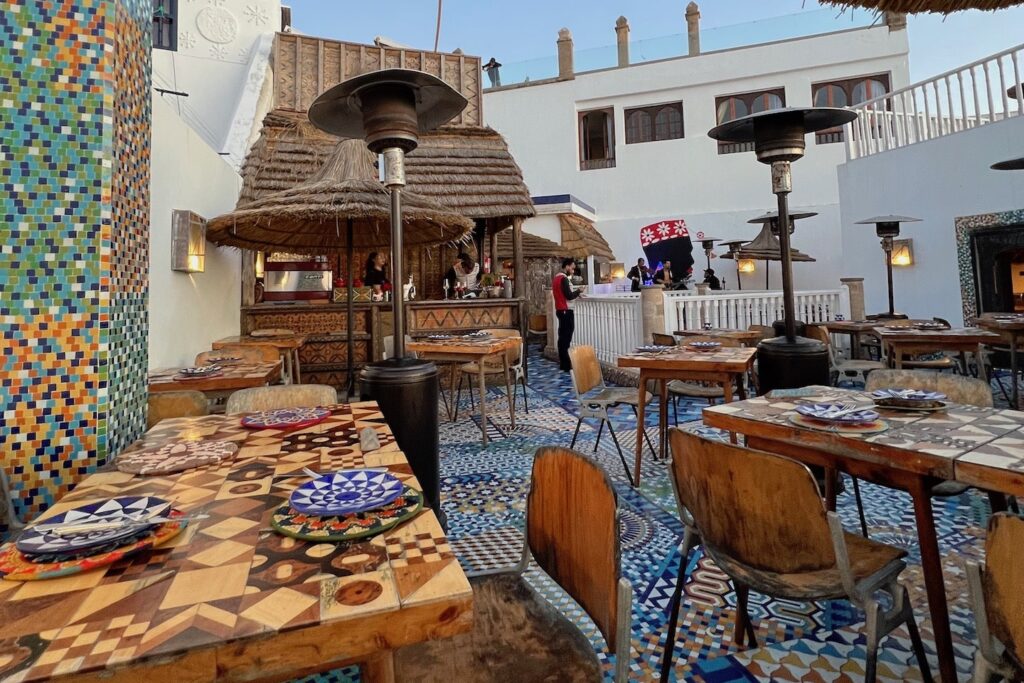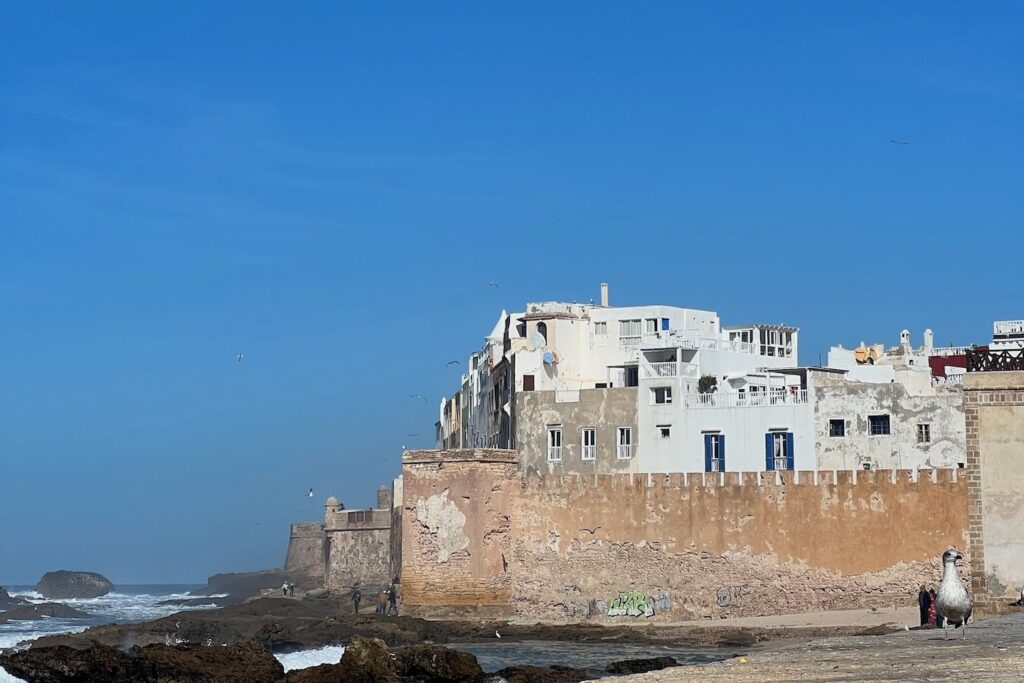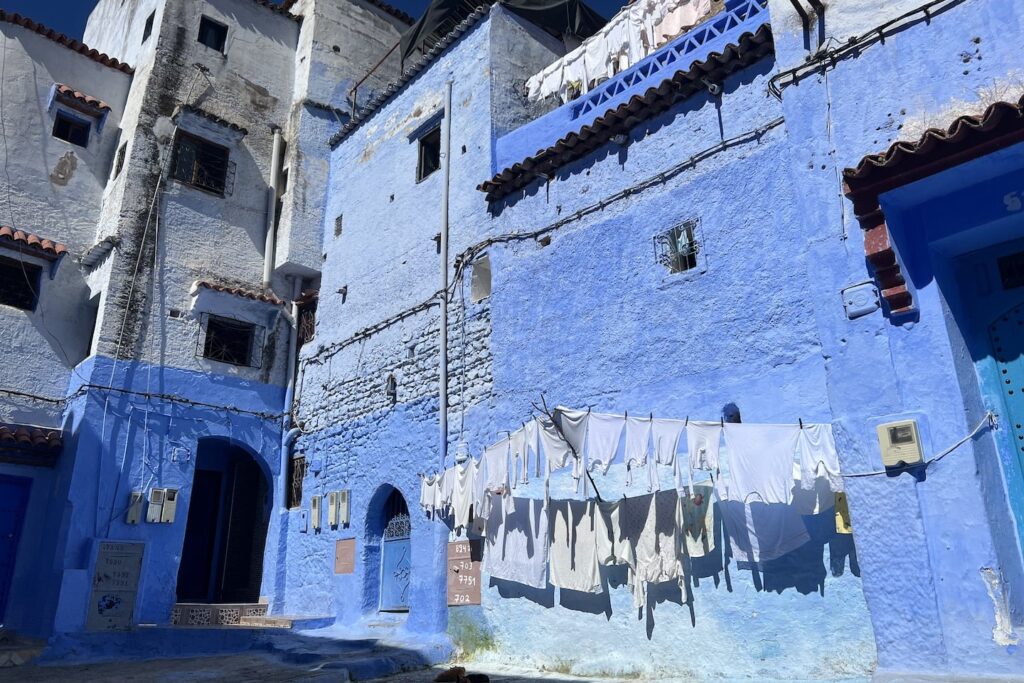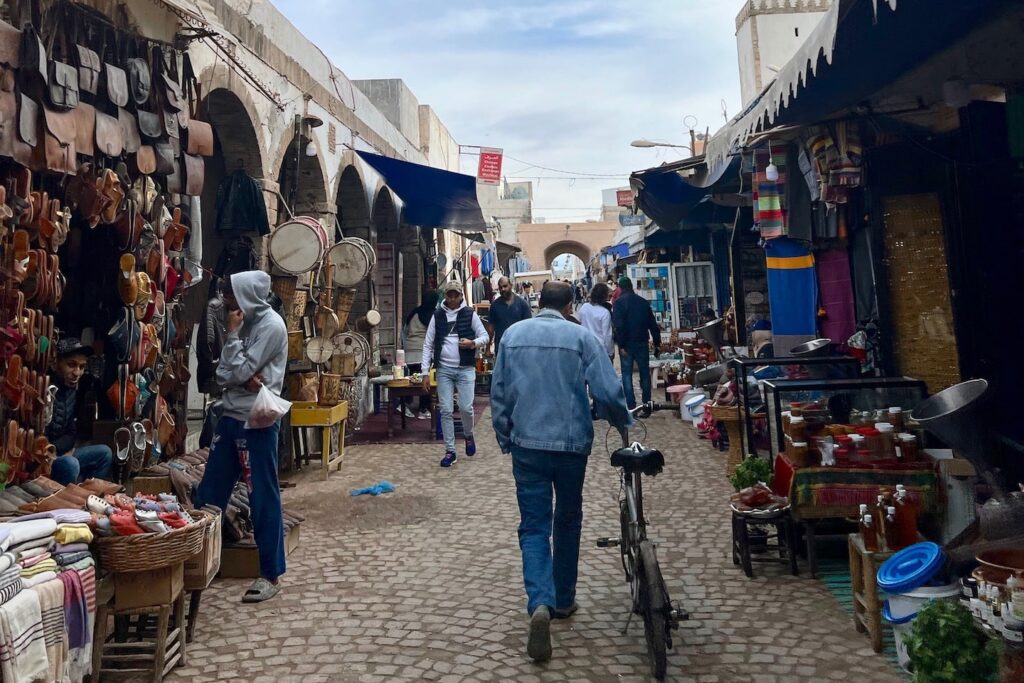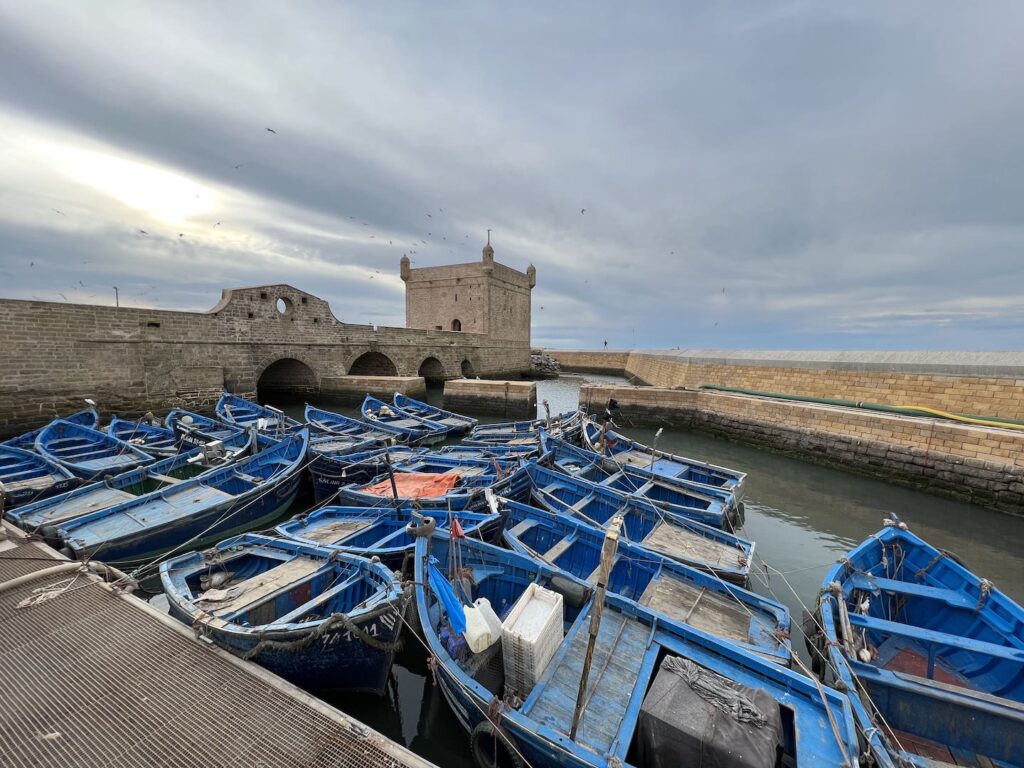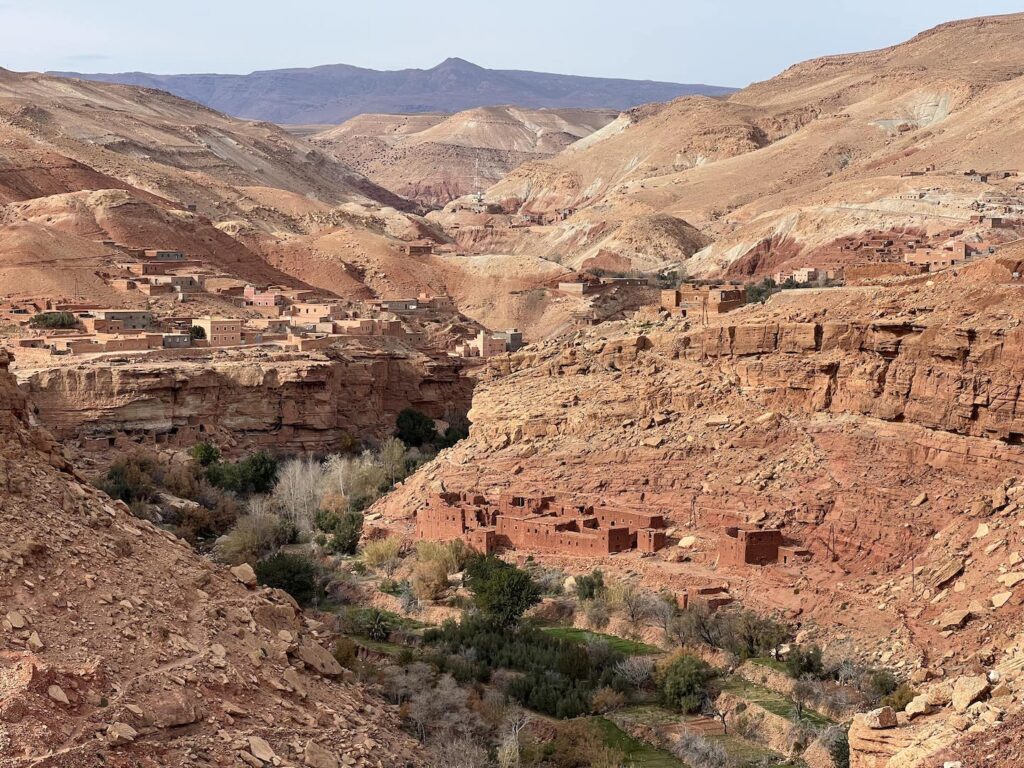This is the ultimate Morocco travel guide for 2023, covering everything there is to know about visiting this beautiful country. I designed this page to be a complete resource for trip planning, outlining general things to know about Morocco, the top places to visit, bucket list experiences, how to get around, and a whole lot more.
The Best Morocco Travel Guide
After living here for six months and exploring nearly every corner of this beautiful country, I’m super excited to share what I’ve learned in this Morocco travel guide. From the things I wish I knew before traveling to essential safety information, I’ve packed it all in here for easy access.
Keep reading to discover all there is to know with this complete Morocco travel guide!
Main Things to Know About Morocco
> Language: The official languages of Morocco are Arabic and Berber(also called Amazigh). However, the most common language spoken in Morocco is Darija, or Moroccan Arabic, which is a combination of Arabic, Amazigh, French, and Spanish.
Moroccan people are some of the most talented with languages I’ve come across on my world travels. Many people speak French, Spanish, and English in addition to Darija, especially in touristy areas.
> Currency: The currency used in Morocco is the Moroccan dirham (MAD). The exchange rate is about 10 dirhams to $1 U.S. Dollar.
Outside of major cities, most places in Morocco only accept cash. You can withdraw dirhams from local ATMs or exchange in just about every city. Many places will also accept euros and sometimes US dollars.
> Religion: Morocco is a predominantly Muslim country, with Islam being the official religion. The practice of religion is an important part of Moroccan culture and daily life, with many mosques and religious sites throughout the country. You’ll hear the Call to Prayer five times a day, and at this time, many small shop owners will close to go to the mosque.
> Safety: In my experience, Morocco is quite a safe country, especially as a woman. There are some common scams to look out for and a bit of catcalling, but aside from that, the people are some of the nicest I’ve met anywhere in the world.
> Clothing: Morocco is a fairly conservative country, and it’s important to dress appropriately, especially if you’re a woman. Women should dress modestly and cover their shoulders and knees. Loose-fitting clothing is ideal for staying cool in Morocco’s hot weather, so think maxi dresses, flowy pants, and short sleeve jumpsuits.
Though definitely pack layers because it gets cold at night. If you’re visiting Morocco during the winter, it’s pretty chilly, especially up north and in the desert.
Top Places to Visit in Morocco
Morocco is a country full of vibrant culture, beautiful architecture, and stunning landscapes. Here are the top 8 places to visit in Morocco on any trip.
1. Marrakech: Known as the “Red City”, Marrakech is definitely the most iconic place to visit in Morocco. Home to beautiful palaces, gardens, and mosques, there are secrets hiding behind every ornate door. Take a stroll through the bustling souks, shop for spices and souvenirs, and indulge in some traditional Moroccan cuisine.
2. Fes: This ancient city has been designated as a UNESCO World Heritage Site and is home to the famous leather tanneries. Be sure to explore the maze-like streets of the medina (there are more than 4,000 of them!) and catch a sunset from the Marinid Tombs.
3. Chefchaouen: This picturesque blue city is nestled in the Rif Mountains and is the perfect place to escape the heat. There are many things to do in Chefchaouen, like take a hike to the Spanish Mosque for breathtaking views of the city or cool off by the Ras El Ma River. With more time, a day trip to Akchour is a must.
Read More: Chefchaouen Travel Guide
4. Casablanca: Known for its stunning architecture and beautiful beaches, Casablanca is the main business hub of Morocco. Though, there’s still plenty of culture to enjoy. Don’t forget to check out the famous Hassan II Mosque and Marché Central for the catch of the day.
5. Tangier: This port city has a rich history of being a gateway between Europe and Africa. Explore the Kasbah Museum, relax on the stunning beaches, and drink mint tea on one of the countless rooftops in the medina. On a clear day, you can see Spain across the water!
6. Merzouga: This small town is the entrance to the Sahara Desert in Morocco. Experience a camel trek through the dunes and spend the night sleeping in a tent under the stars. Merzouga is also a top place for adventure activities like quad biking and dune buggies.
7. Essaouira: This charming coastal town is known for its enchanting beaches and relaxed atmosphere. In terms of things to do in Essaouira, you have a fair share of options. Take a stroll through the historic medina, hang out on the beach, chow down on some fresh seafood, and listen to live Gnaoua music.
Read More: Essaouira Travel Guide
8. Ait Ben Haddou: This fortified city is a UNESCO World Heritage Site and has been used as a backdrop for numerous films and TV shows, including “Game of Thrones”. Explore the winding streets and marvel at the stunning architecture, which dates back to the 17th century. It’s a great day trip from Marrakech or a stop on the way to Merzouga.

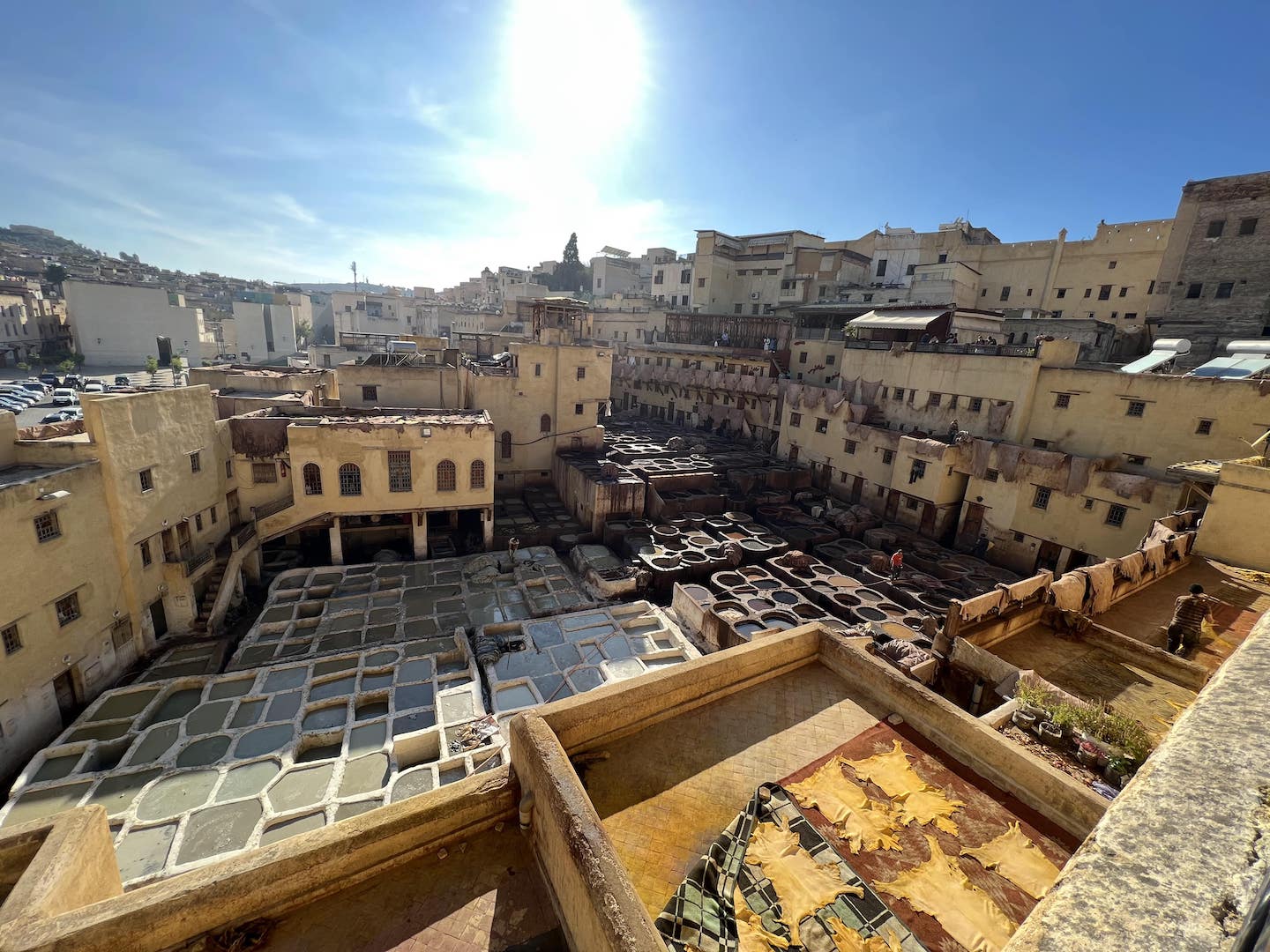
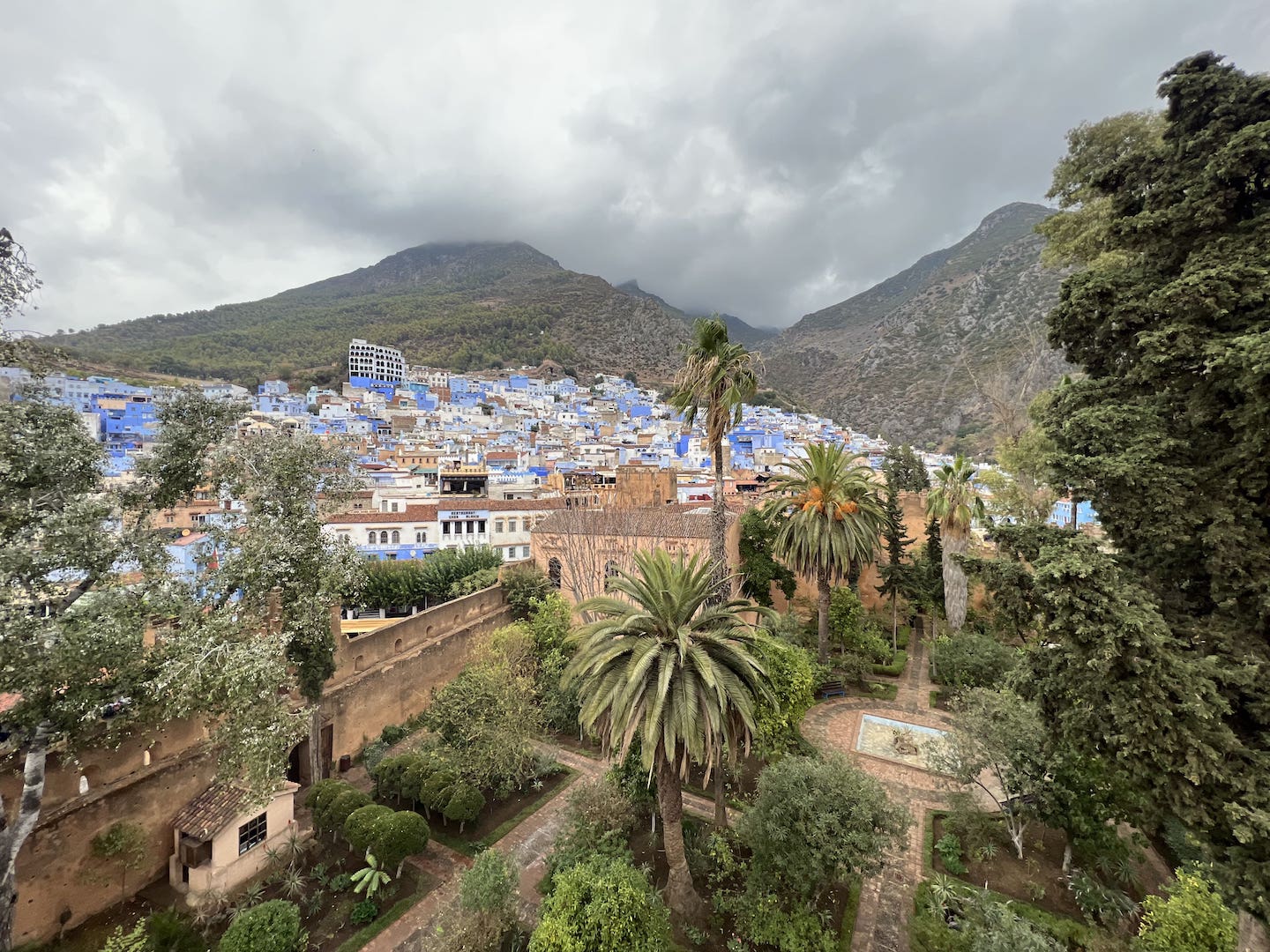
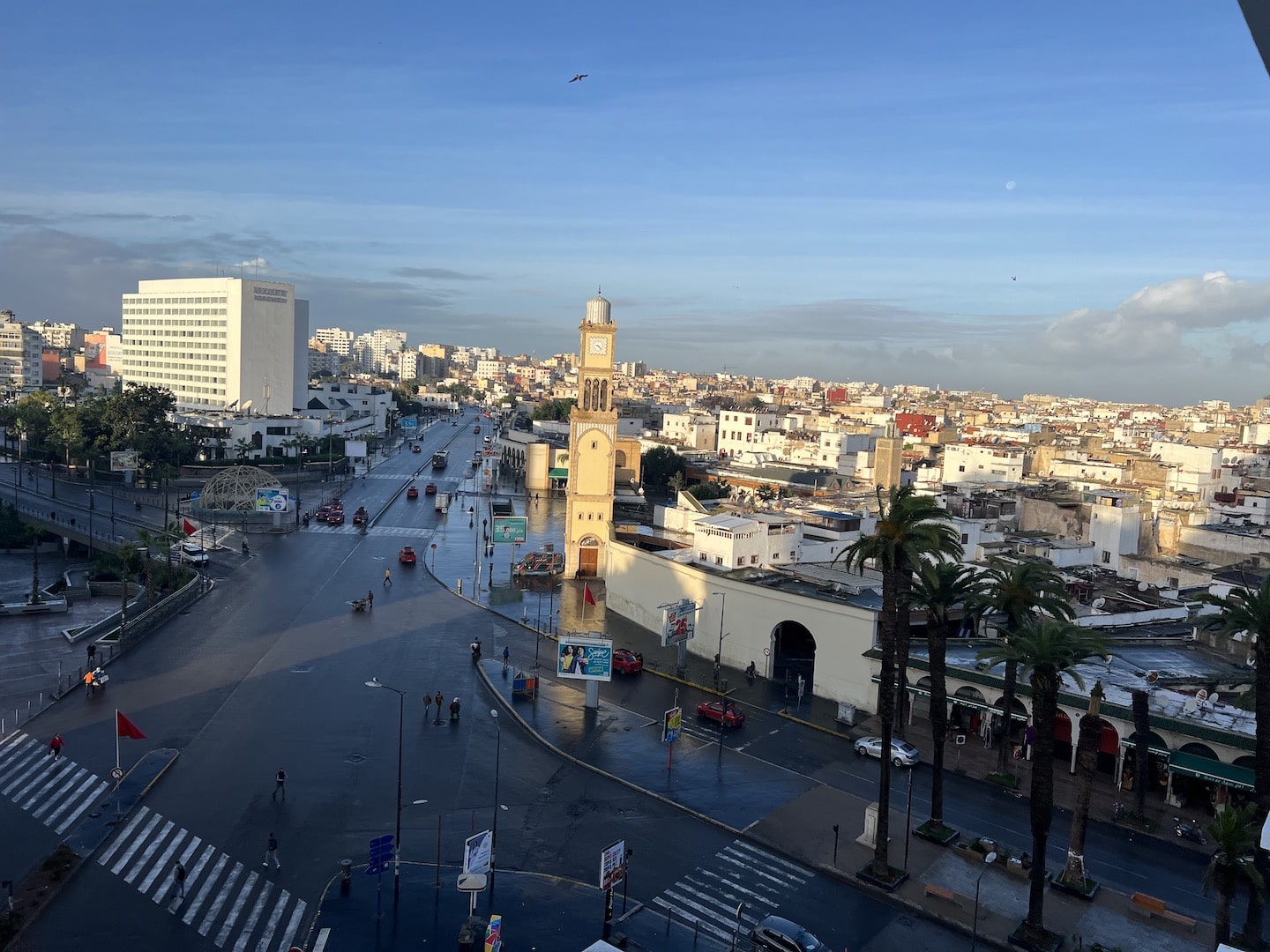


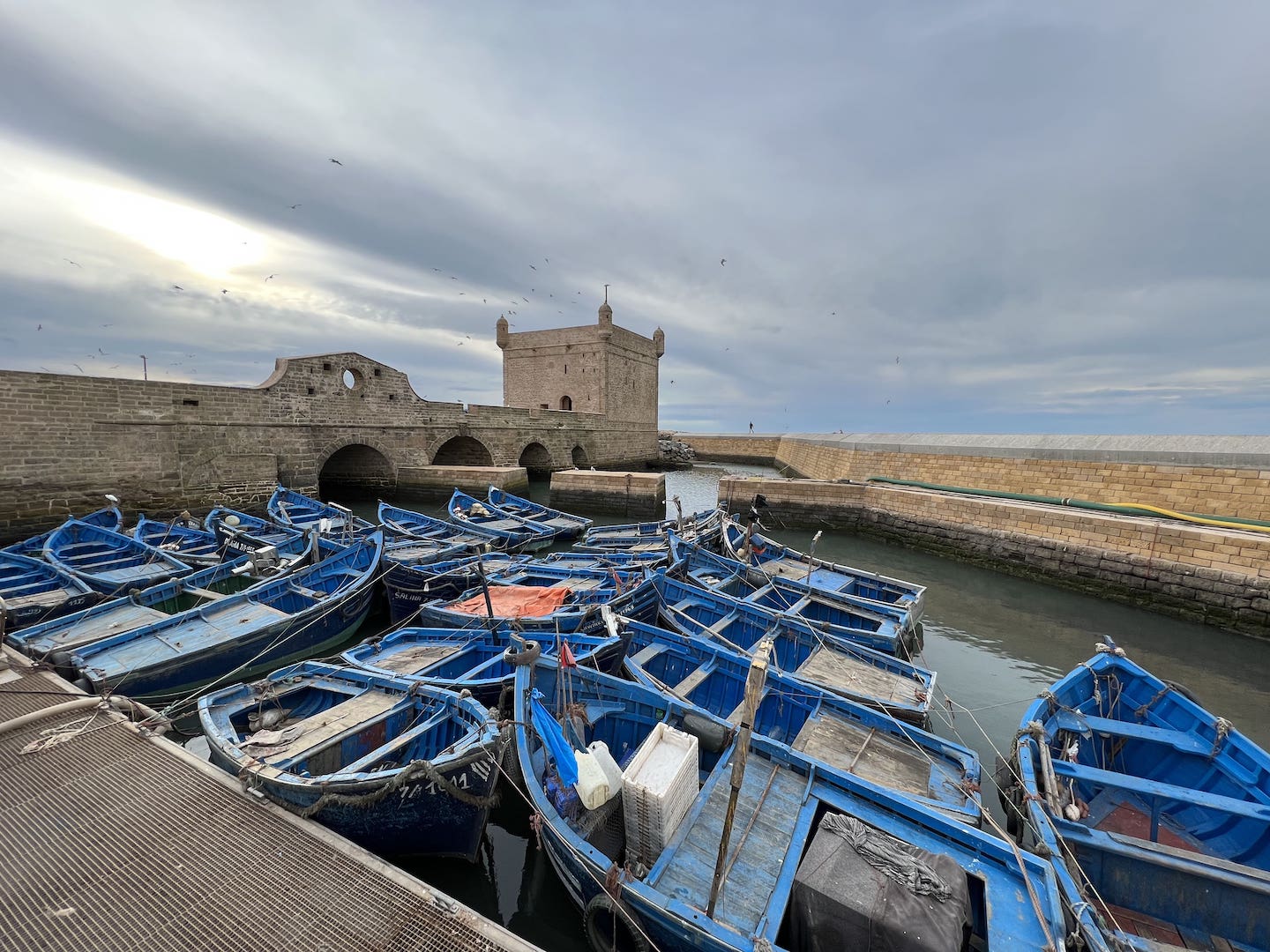

Best Time to Visit Morocco
The best time to visit Morocco is during the spring (mid-March to May) or the fall (September to October), when the weather is mild and pleasant. The summer months can be extremely hot, especially in the desert regions, and the winter months can be chilly, especially in the Atlas and Rif Mountains. It’s also important to note that Ramadan, the Islamic holy month of fasting, can affect travel plans as many businesses and restaurants have altered schedules.
If you’re planning a trip to Morocco in the summer, consider coastal destinations like Essaouira, Casablanca, and Tangier, with a day trip to Chefchaouen and Akchour for swimming.
Visiting Morocco in the winter? This is a prime time to take a Merzouga road trip and camp in the desert. Winter is also a great time to visit places like Marrakech and Fes.
Read my complete guide on the best time to visit Morocco for seasonal and monthly breakdowns, plus when to visit based on the kind of trip you’re looking for.
How to Get Around Morocco
There are several options for getting around Morocco, depending on your budget and level of comfort. This Morocco travel guide covers the most common methods.
Taxis
Taxis are readily available in most cities, but be sure to negotiate the fare before getting in. For local trips, ask that the meter is turned on. Taxi drivers in Morocco are notoriously tricky (especially in Marrakech and Fes), so keep your eye out for any funny business.
You can also take large shared taxis to get between some cities in Morocco, like Tangier and Chefchaouen. This is a great option for budget travel because you split the fare with the other passengers and only pay for your seat (there are six seats in total). Most Morocco travel guide neglect to mention this option, but it’s truly the best way to travel around Morocco.
There’s generally a central big taxi station in the city run by an operator in a neon vest. Find him and let him know where you’d like to go, and he’ll take you to the taxi departing next.
This method of travel is my favorite and one of the top ways to experience a super local side of Morocco.
But be warned: you may end up waiting quite a while if no one else is going to the same destination. If this happens, you can always pay for the open seats to leave immediately.

Buses
Buses are the cheapest option to travel around Morocco. The main company is CTM, but you can also sometimes book buses called Autocars through ONCF.
Buses can be crowded and loud, but in my experience, they’re super comfortable. They’re also the best option to travel in Morocco with a lot of luggage since there’s limited space in taxis, and train storage can be cumbersome to deal with.
Trains
Trains are a great option for longer journeys, with comfortable seating and air conditioning. The main company is ONCF, and you can book tickets in advance through their website or at the train station.
Honestly, second class is just as good as first class, so if you’re torn between the two, save your money. That said, you can see what first class looks like on most Moroccan trains below.
In 2018, Morocco opened a fast train called the Al Boraq (or the TGV) that travels between Casablanca and Tangier in only two hours.

Private Car
For more flexibility, consider renting a private car to take a road trip, especially if you want to visit the desert.
Car rentals are normally around 400 dirhams ($40) for a single day, with as low as 200 dirhams ($20) daily rate for longer rentals.
However, Moroccan driving is pretty lawless, and the roads can be treacherous in some places. If this is a concern, you can always rent a private car with a driver, though this will be much more expensive.
Morocco Accommodation
There are plenty of options for accommodation in Morocco, from budget hostels to luxurious riads.
A riad is a traditional Moroccan house with an interior courtyard, often converted into a hotel or guesthouse. For a unique experience, consider staying in a riad in the medina for a taste of local life. Riads often include rooftops with gorgeous views and traditional breakfast offerings.
There are riads that cater to all budgets throughout Morocco, as well as hotels, Airbnbs, and hostels.
Camping is also an option in some places, particularly in the Sahara Desert.
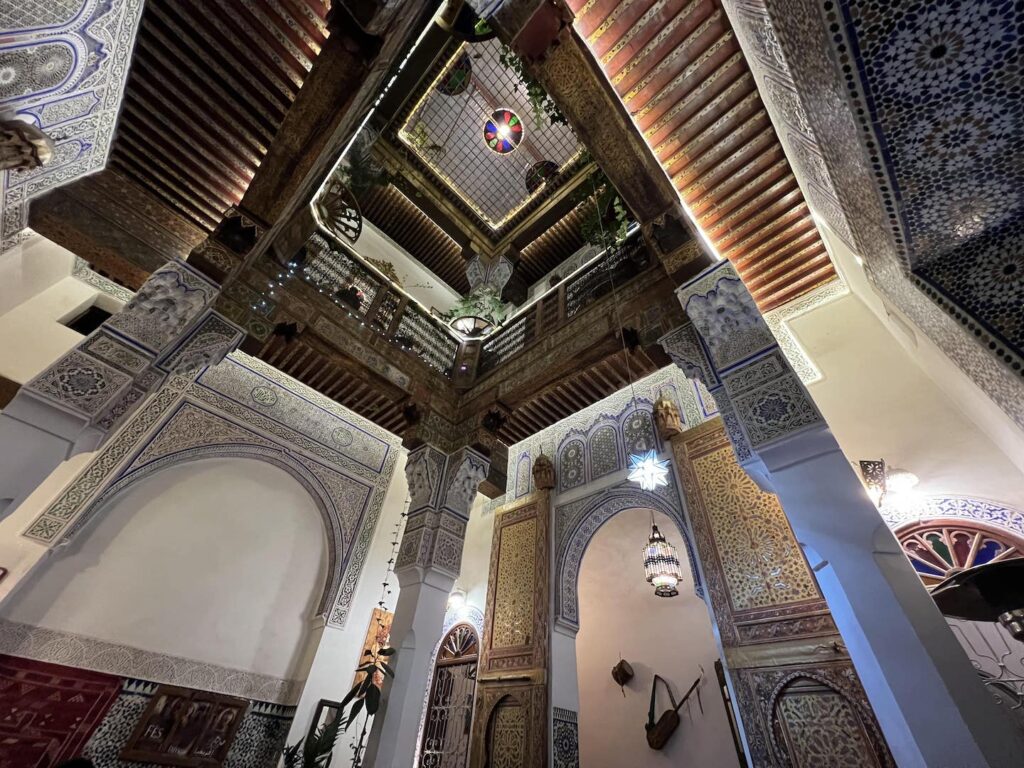
Moroccan Food and Drink
What’s any Morocco travel guide without a food section? Moroccan cuisine is renowned for its flavorful spices and exotic ingredients. It’s unbelievably delicious, with large portions, hearty side dishes, and satisfying meals. There are lots of healthy choices and vegetarian options when it comes to Moroccan food, making it a fairly easy country to enjoy food-wise if you have dietary restrictions.
Main dishes to try are:
- Tagine: A slow-cooked stew made with meat, vegetables, and spices. The dish is named after the conical earthenware pot in which it is cooked.
- Couscous: A staple dish made with small steamed balls of semolina grains, typically served with vegetables and meat. It’s traditionally eaten every Friday.
- Harrira: A traditional soup made with lentils, chickpeas, tomatoes, and spices. It’s often served as a meal during Ramadan.
- Zaalouk: A salad made with cooked eggplants and tomatoes, seasoned with garlic, cumin, and paprika. It’s typically served as a side dish and is super yummy.
- Mint tea: A popular drink in Morocco made with green tea, fresh mint leaves, and lots of sugar. It’s often served as a sign of hospitality.
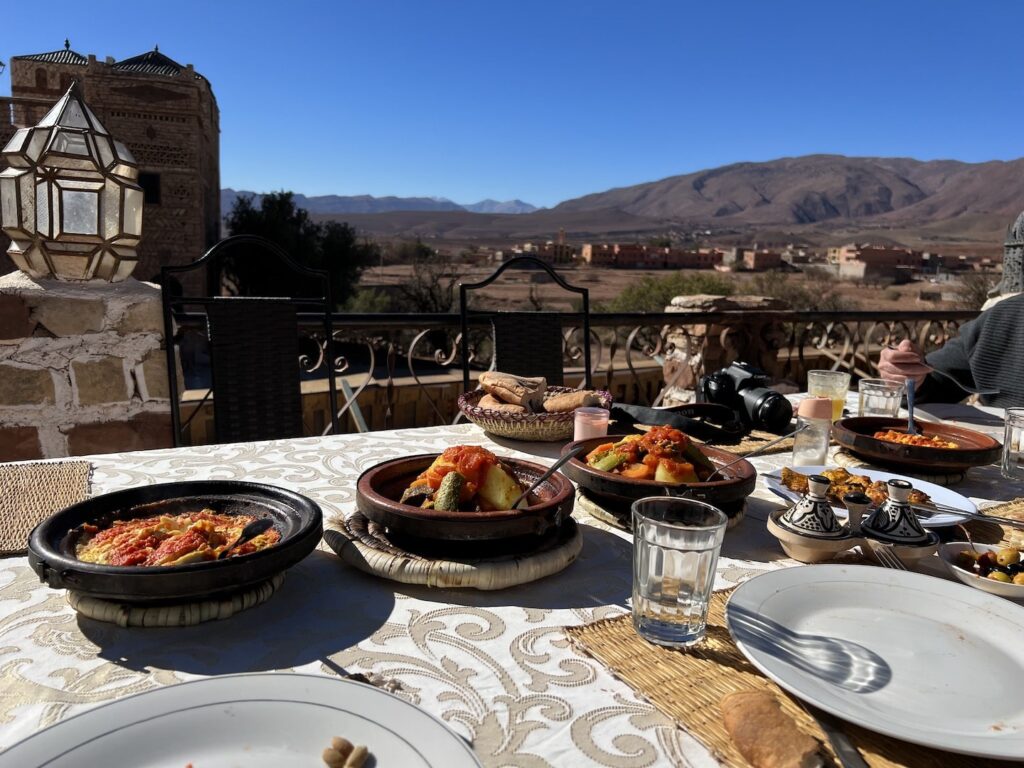
Moroccan pastries are also a quintessential part of the country’s cuisine and any Morocco travel guide. These sweet treats are often made with almonds, honey, and other delicious ingredients.
One of the most popular Moroccan pastries is the “kaab el ghazal,” which translates to “gazelle’s ankles.” This pastry is made with a flaky crust and filled with a sweet almond paste.
Another popular pastry is the “chebakia,” which is made by frying dough that has been coated in honey and sesame seeds (my personal favorites).
These pastries are often enjoyed during special occasions such as weddings or religious celebrations. Don’t leave Morocco without trying some of these delicious treats!
Morocco Bucket List
Morocco is full of unique, captivating, and bucket list experiences. From riding camels in the desert to surfing on the coast, this Morocco travel guide only covers a fraction of the adventures in store. To get you started, here’s a list of some of the best things to do in Morocco.
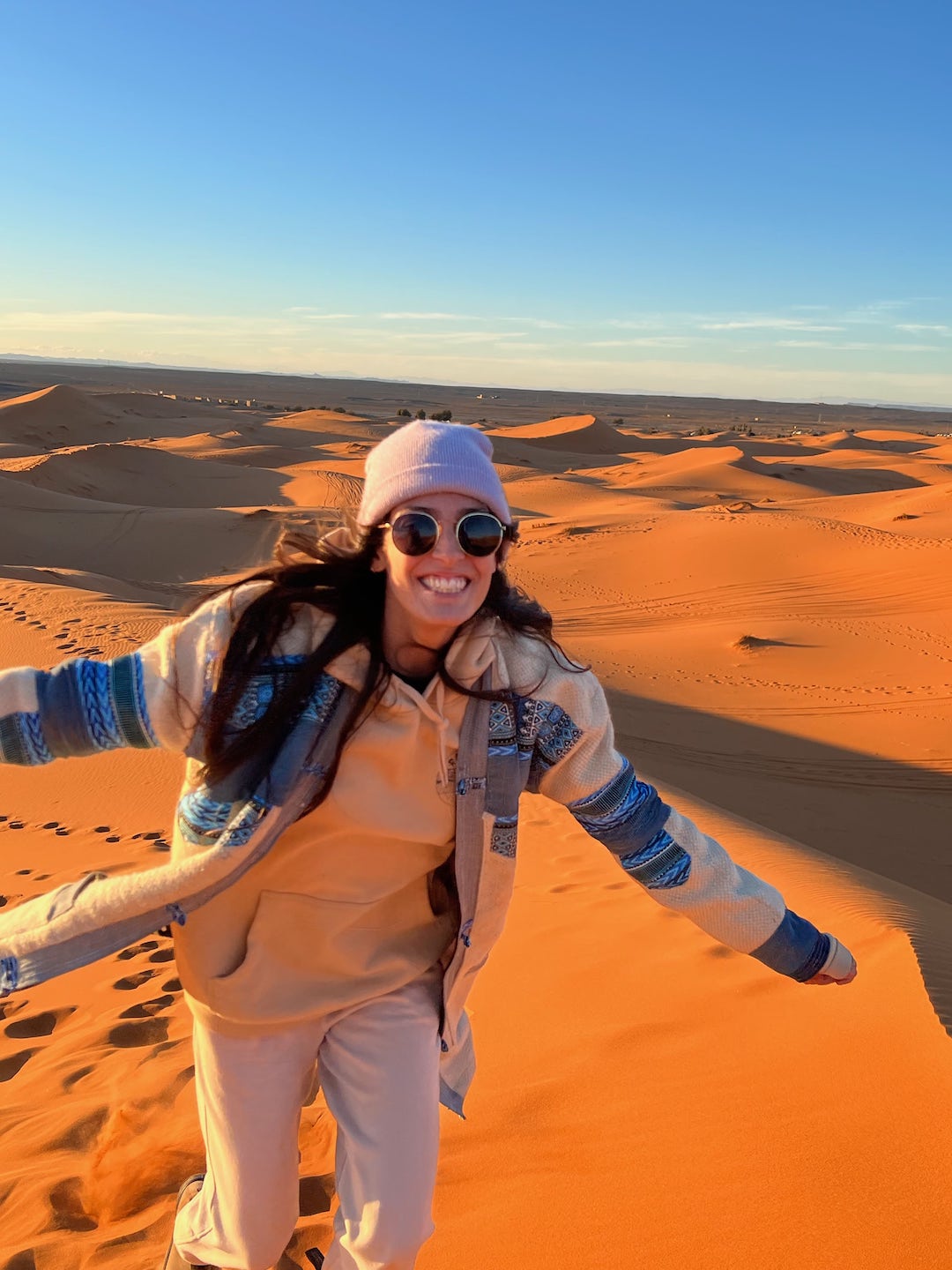
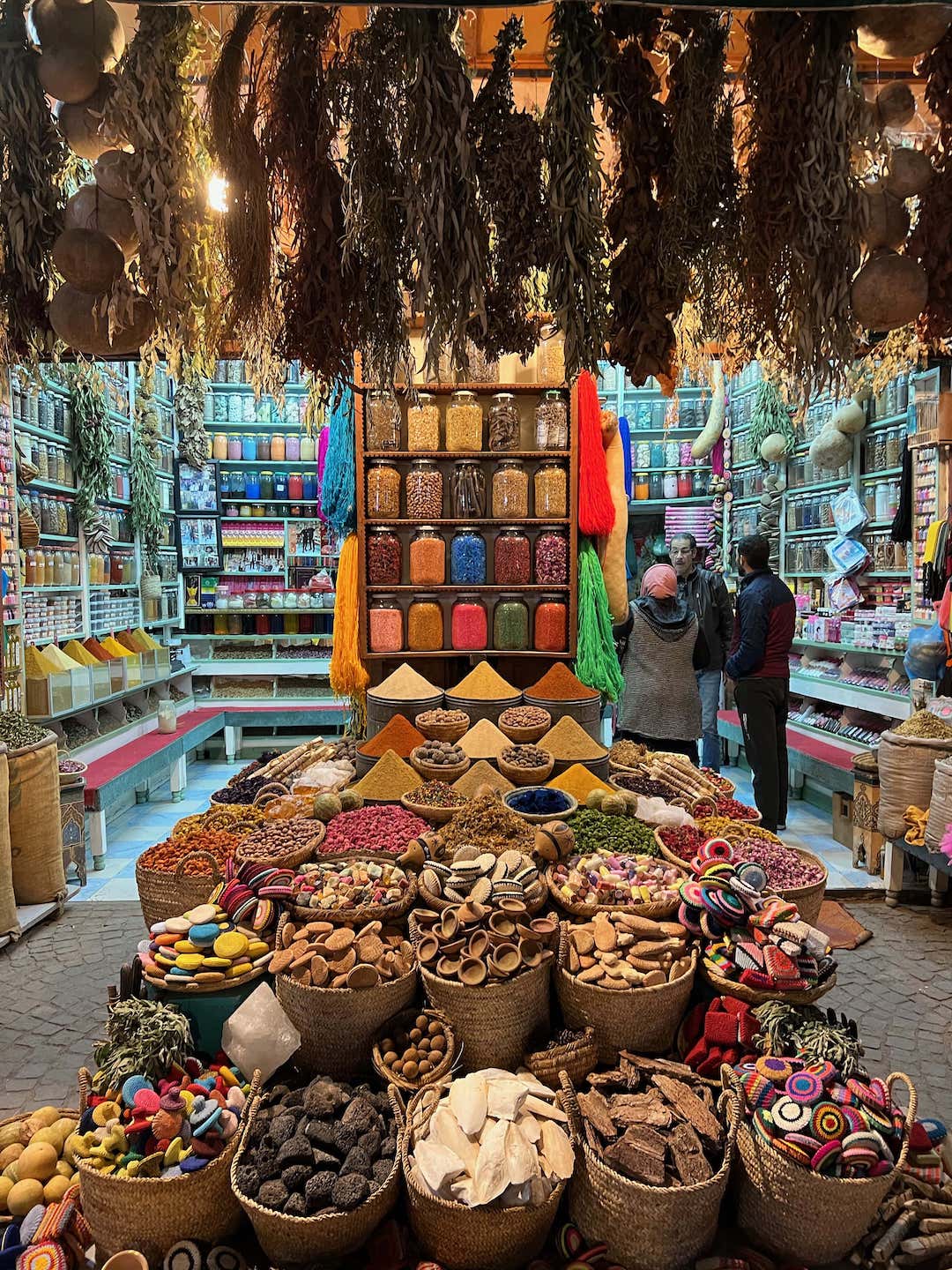
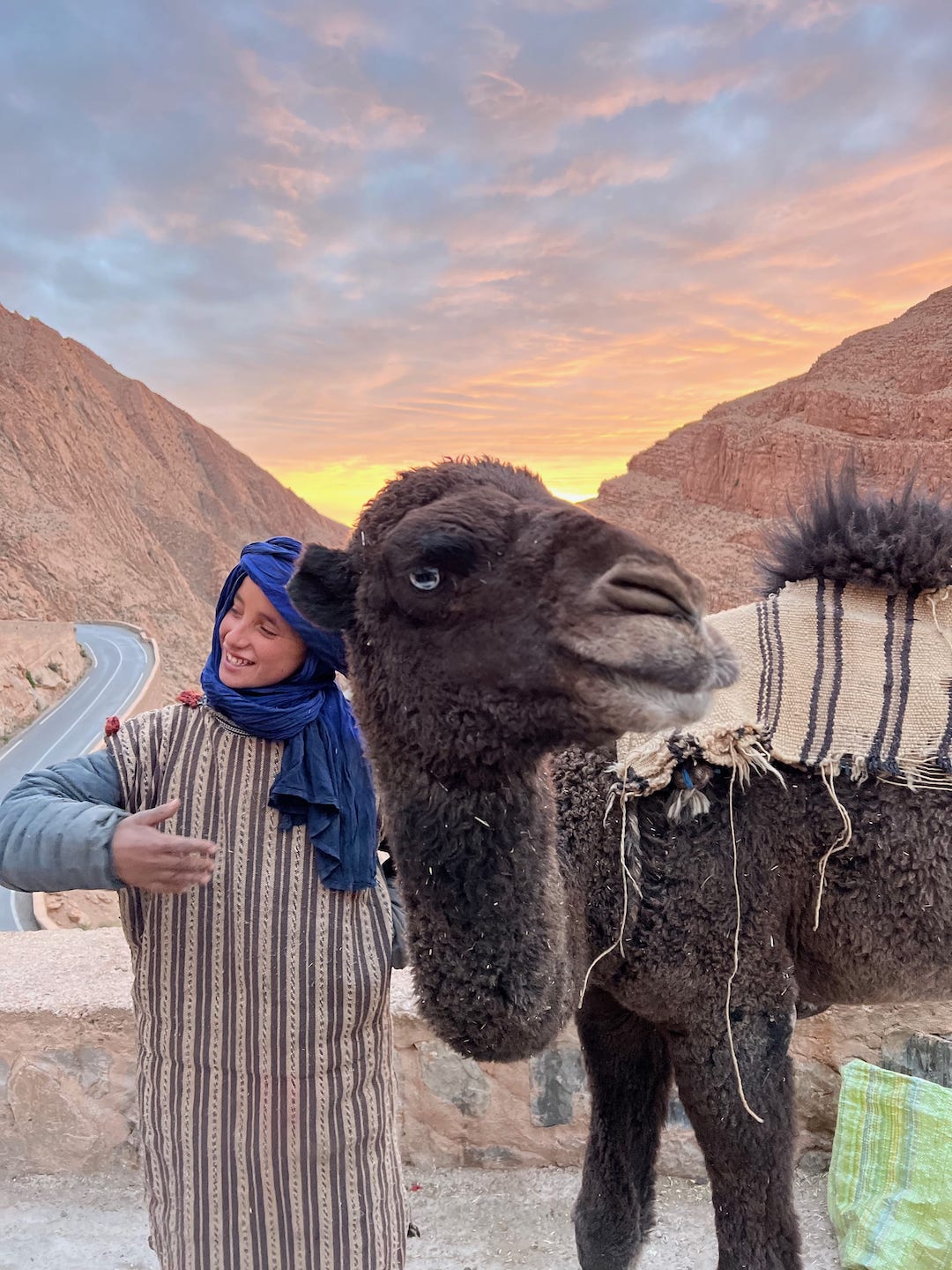
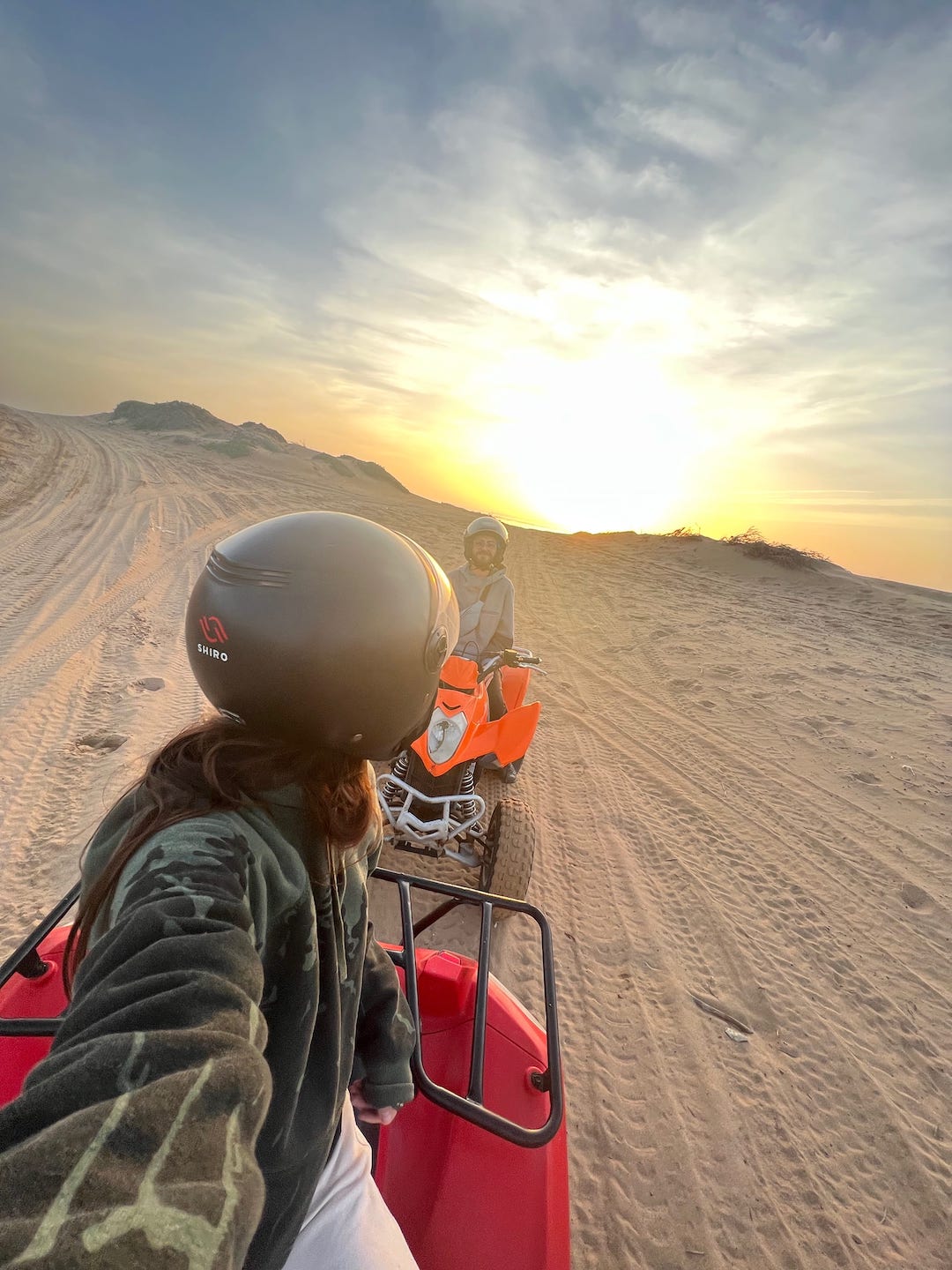

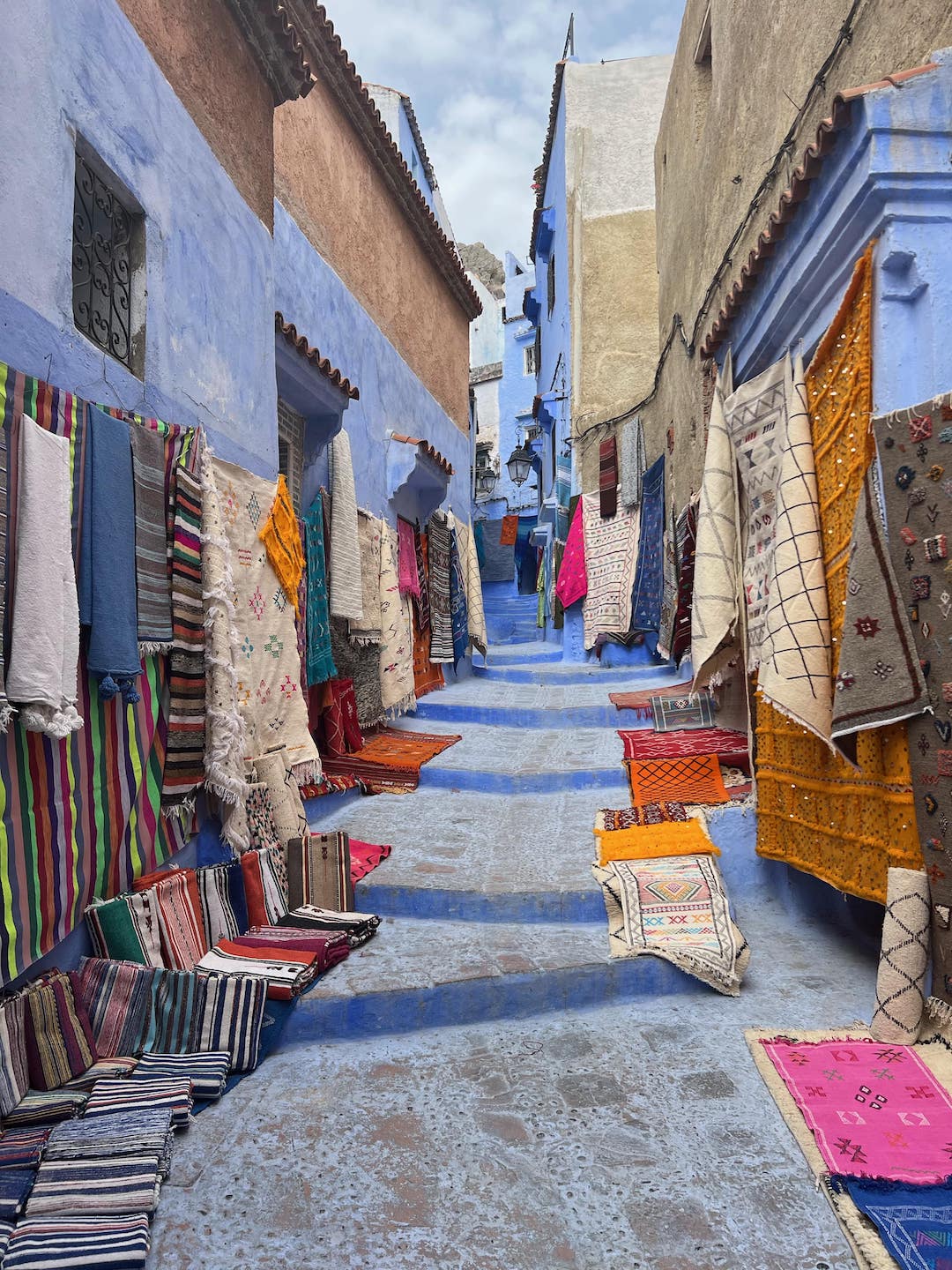
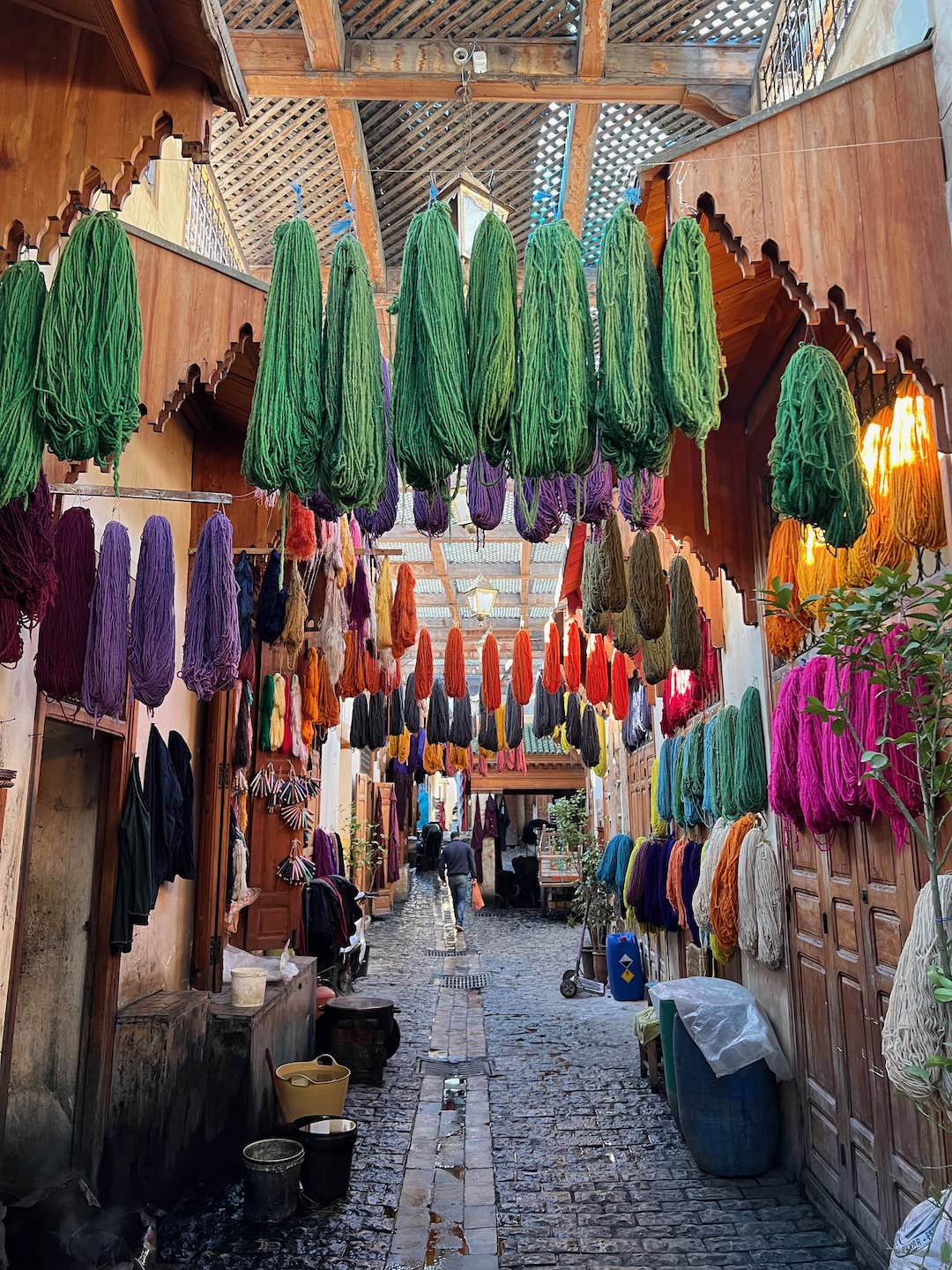
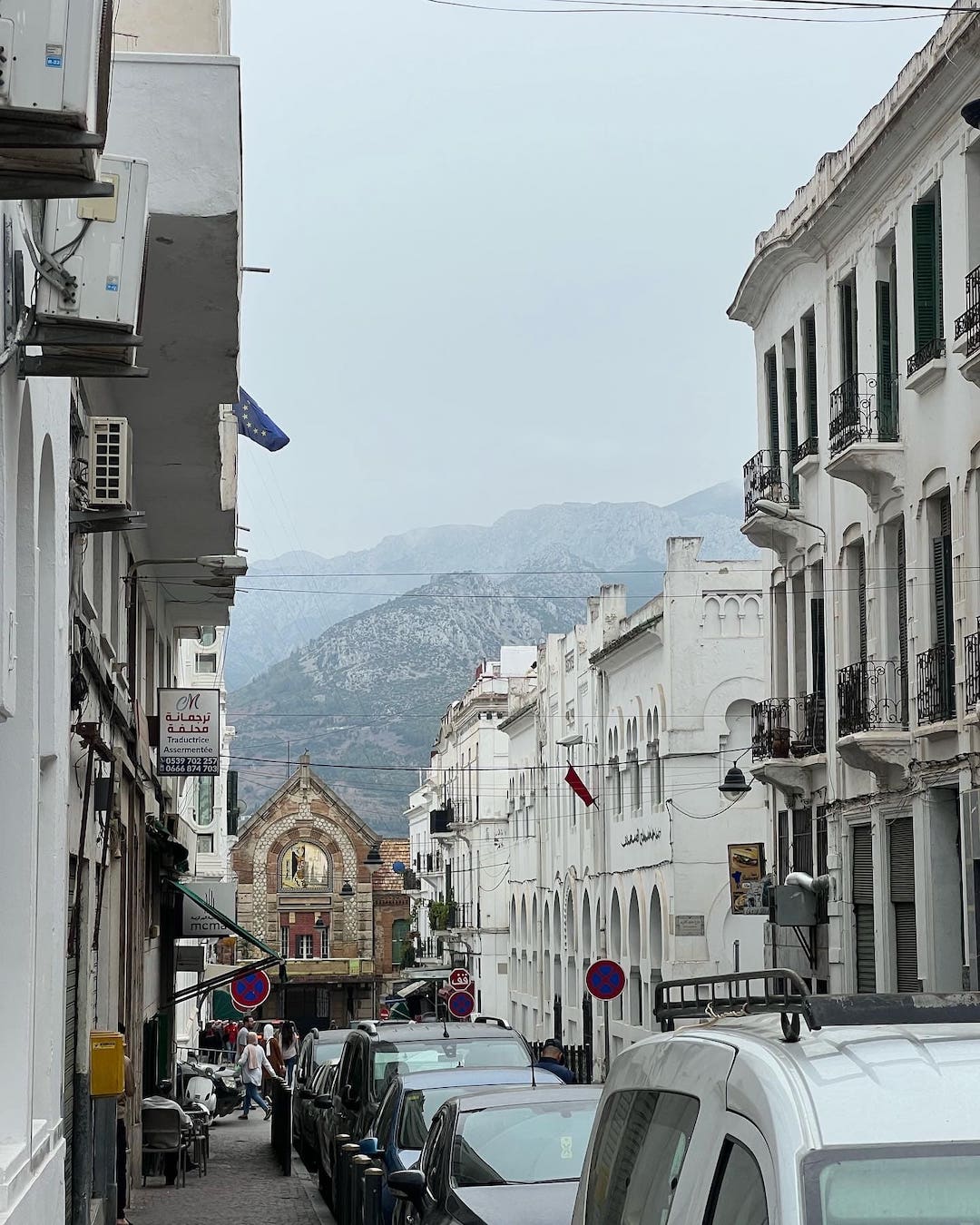
What to Know Before Going to Morocco
Like most countries, there are a few key things to know before going to Morocco to have a safe and enjoyable trip.
- Pack in a backpack instead of a roller bag if possible because medinas can be crowded, with steep hills, many stairs and no car access.
- Dress appropriately, especially if you’re a woman. Morocco is a conservative country, and it’s important to respect the local culture. For women, this means dressing modestly and covering your shoulders and knees.
- Carry cash with you, as many places don’t accept credit cards.
- Since Morocco is an Islamic country, the Call to Prayer happens five times a day. The first one happens before sunrise, and the last one happens just after dark.
- Avoid displays of public affection, which are frowned upon.
- Alcohol is not widely available in Morocco due to the Muslim religion. However, there are bars in some cities like Marrakech and Tangier. There are also some restaurants in larger cities that serve alcohol. You can also buy booze at some large grocery stores.
- Avoid drinking tap water, and opt for bottled water instead to avoid getting sick.
- Watch out for common scams, which I get into below.
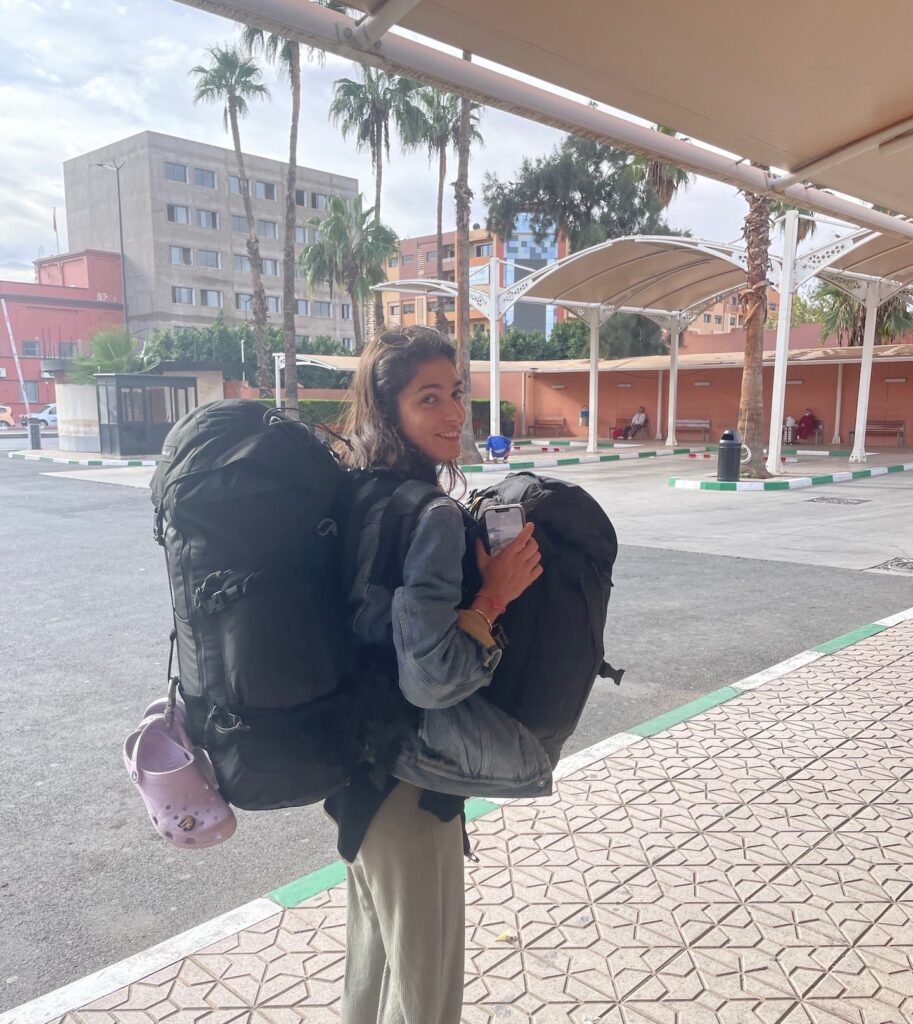
Common Scams in Morocco
Morocco is generally a safe country, but like any tourist destination, there are some scams to watch out for. I figured I’d throw them into this Morocco travel guide so you know exactly what to look out for.
These are a few of the most common:
Faux Guides: These are people who pose as official guides and offer to show you around the city. They may be friendly at first, but they will often take you to overpriced shops or try to pressure you into buying things you don’t need.
To avoid this scam, only hire official guides through your hotel or a reputable travel agency. You can also ask for recommendations from other travelers or locals. If someone approaches you as a tour guide, ask for their official badge.
Overpriced Souvenirs: In the markets (known as souks), vendors will often try to sell you items at a much higher price than they’re worth. They may also use high-pressure tactics to get you to buy more than you need.
To avoid this scam, always negotiate the price before buying anything. Start by offering about half of what the vendor is asking, and be prepared to walk away if the price doesn’t come down.
“It’s Closed”: In some cities in Morocco, especially Fes, you may be walking in the medina, and someone will tell you, “it’s closed,” and try to steer you somewhere else. After falling for this scam dozens of times, I finally realized they were lying… every. single. time.
Pickpocketing: Pickpocketing is fairly common in Morocco, especially in crowded areas like markets, large squares, and train stations. Thieves may work in groups to distract you while they steal your wallet or phone.
To avoid pickpocketing, keep your valuables close to your body and be aware of your surroundings. Wear a money belt or keep your wallet in a front pocket rather than a back pocket. You should also avoid pulling out large sums of money at once when paying for things.
Fake Transportation: In major tourist destinations like Marrakech, you may encounter people offering transportation to nearby destinations. These may be scams, and you could end up paying a lot of money for a subpar experience.
To avoid this scam, only get in official (clearly marked) taxis and book tours and longer transportation through your hotel or a reputable travel agency. Don’t be afraid to ask for recommendations or read reviews online before making a booking. If something doesn’t feel right, it probably isn’t.
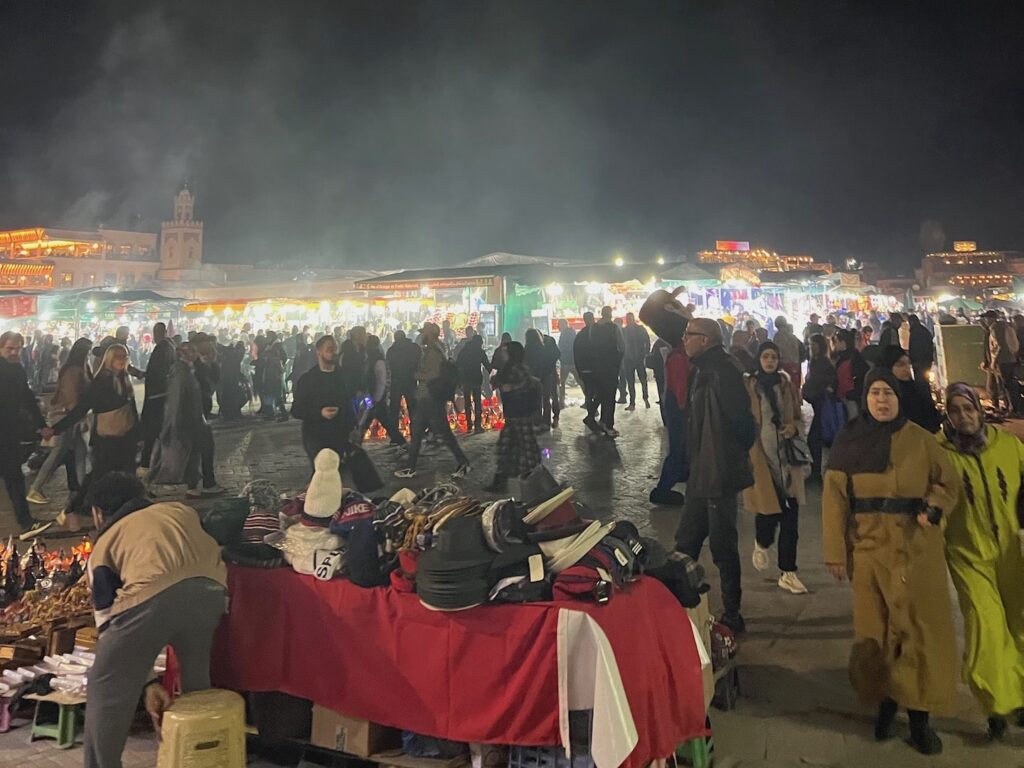
How to Stay Safe in Morocco
While Morocco is pretty safe, it’s still important to take precautions. These are a few final tips for this Morocco travel guide to help you stay safe:
- Keep an eye on your belongings at all times, especially in crowded areas.
- Be cautious when using ATM machines, and avoid withdrawing large sums of money at once.
- Don’t walk alone at night, especially in unfamiliar areas. Medinas can be particularly hard to navigate after dark, so be sure to have clear landmarks.
- Keep all valuables out of sight in your room, and locked if possible.
- It’s best to leave the flashy jewelry at home.
- When paying for something, don’t pull out all of your cash at once. Otherwise, you may become a target quickly.
- Like with any international trip, always carry your passport safely with you.
With these few things in mind, you’ll have a stress free trip to Morocco


